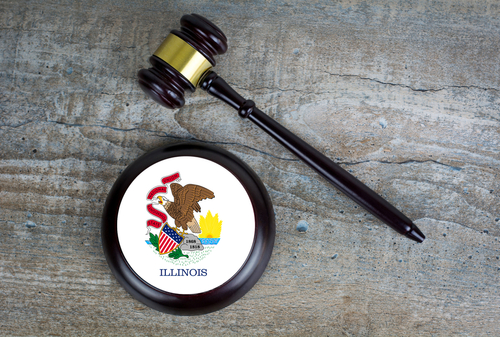Legal Lessons from Holiday Lights: Clarity in Patent Drafting | Seyfarth Shaw LLP
Decking the halls with festive flair is a beloved tradition, from cozy and simple to dazzling displays that could rival Clark Griswold’s winter wonderland. In this yuletide landscape, lights play a starring role, sparking whole industries focused on holiday home illumination. A centerpiece of this seasonal spectacle is often the twinkling Christmas tree.
Traditional tree lighting mainly focuses on the tree’s exterior, with their daytime wiring detracting from the tree’s aesthetic, requiring the wiring to be tucked away under tinsel and ornaments. Enter U.S. Patent No. 7,784,961, with its “clip-attachable light strings for Christmas tree branches,” a merry makeover for tree lighting. This jolly invention lights up each branch individually, featuring a central bus wire nestled near the trunk, branching into 5 to 10 light circuits, each sporting 10 to 20 bulbs. Clipped at each branch’s end, these strands can be extended to fit any tree, from a small spruce to a grand fir, creating a more enchanted, branch-by-branch illumination compared to the old ring-around-the-rosy style.
U.S. Patent No. 7,784,961
Before sledding into the patent’s technicalities, the inventor of this Christmas cheer utilized a lesser-known path under U.S. patent law. Under 35 U.S.C. 122(b)(2)(B)(i), the patent application was kept under wraps, avoiding publication until patent issuance. Fortunately, the patent office unwrapped this gift to tree trimmers everywhere on August 31, 2010, though it has since found its way onto the patent ‘naughty list’ for its indefinite language and the unnecessary use of quantifiers.
Let’s consider the final two elements of claim 1:
- wherein said device decorates all types of said tree branches in a more realistic manner by outlining each of said tree branches; and
- wherein said device is capable of completely covering any size tree by interconnecting as many of said multiple light string devices as needed
Under U.S. patent law, patent claims must particularly point out and distinctly claim an invention, such that a person skilled in the relevant field can understand the scope of the subject matter. Indefinite language refers to language that is ambiguous, unclear, or too vague. As such, patent practitioners should avoid terms such as “large,” “optimized,” “similar,” and “user-friendly.” The use of these terms will likely lead to a rejection under 35 U.S.C. § 112, and will also lead to problems during litigation. The ’961 patent claims a light string device “wherein said device decorates all types of said tree branches in a more realistic manner by outlining each of said tree branches.” Here, the term “more realistic manner” is indefinite as the term is subjective and ambiguous. This fuzzy term begs the question, how can a naturally undecorated object (i.e., a tree) be “more realistically” decorated?
The claims are further tangled like knotted string lights due to their use of quantifiers, such as “capable of completely covering any size tree by interconnecting as many of said multiple light string devices as needed.” This broad language leaves room for competitors to sidestep infringement by designing lights for specific tree sizes and/or lights that do not completely cover a tree. For example, a lighting device that can only cover trees between four to twelve feet would not infringe this claim limitation. As another example, a lighting device that can cover every portion of the tree except for the tip of the tree may not infringe this claim limitation. When drafting claims, it is important to keep an eye out for infringement and consider whether someone could easily design around the element. A better approach would have been focusing only on the interconnectivity between the lights, rather than an all-encompassing “completely covering any size tree.” For example, applicants could have simply claimed, “wherein said device is capable of being interconnected to another light string device,” without losing the intended scope of the element.
In wrapping up, the story of this patent is a reminder that in the world of patents, as in holiday decorating, clarity and precision are key. Vague language and all-encompassing quantifiers can leave inventors with nothing but a metaphorical lump of coal. When drafting, every Claus should be as clear and bright as a well-lit Christmas tree, ensuring no room for legal Grinches to steal your festive invention.






